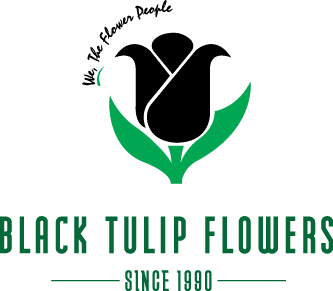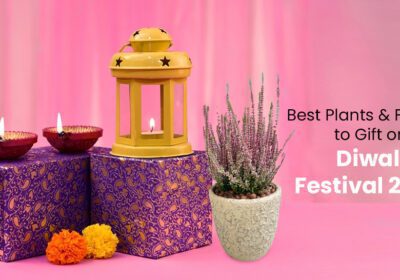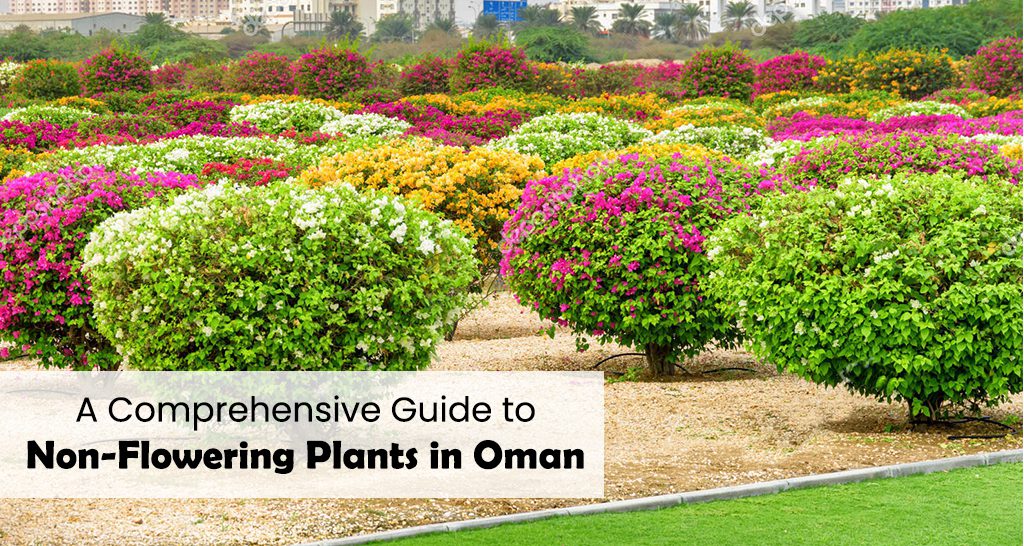
A Comprehensive Guide to Non-Flowering Plants in Oman
Oman has beautiful landscapes and diverse ecosystems and is rich in plant life. Nonflowering plants are essential for Oman’s environment and are found in various forms and shapes, with some producing spores and some with se ds. In other words, even though they lack the beauty and charm of flowering plants, nonflowering plants play an integral part in the ecosystem; this guide will explore the nonflowering plants, their types, examples, and their significance in Oman’s flora.
What are non-flowering plants?
Based on seed production, Plants are divided into flowering plants and non-flowering plants. Non-flowering plants do not produce seeds, flowers, or fruits. Non-flowering plants are divided into two categories
1. cryptogams
2. gymnosperms.
Cryptogams are plants that do not have specialized reproductive organs; they reproduce using spores. Gymnosperms are non-flowering plants that have naked seeds, which are not enclosed within an ovary. The lichen, ferns, moss, mushrooms, fungi, liverworts, etc, are some of the most common non-flowering plants. Read further to learn more about non-flowering plants and their characteristics.
Examples of non-flowering plants: cryptogams & gymnosperms.
Non-flowering plants are also known as cryptogams. This term derives from the Greek words “kryptos” (hidden) and “gamos” (marriage), referring to their hidden reproductive structures. As mentioned earlier, non-flowering plants consist of two types: spore-bearing and seed-bearing plants. Spore-bearing non-flowering plants include ferns, fungi, horsetails, mosses, lichens, and club mosses. Meanwhile, seed-bearing non-flowering plants, also known as gymnosperms, include conifers, cycads, ginkgo, and gnetophytes.
Non-flowering plants- spore-bearing
Spore-bearing plants reproduce using spores, tiny, ball-like structures containing single cells, released when conditions are favorable, allowing them to develop into new plants. These spore-bearing plants do not produce flowers and are classified into mosses and ferns based on their root structures.
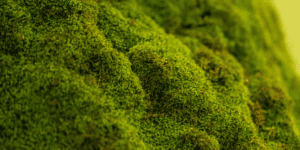
Moss is a tiny plant without true roots, flowers, or seeds. It grows in clusters and makes new plants through spores. Moss can live in harsh places, from snowy areas to hot deserts by sticking to rocks in the ground with rhizoids. There are 12,000 different types of moss known to the world and they don’t just look pretty but also serve important purposes like preventing soil erosion, creating microclimates, and indicating environmental health. Some common mosses are sphagnum in the waterway or peat, bog, swamp mosses, haircap mosses on damp ground, and pincushion mosses in moist woods on soil and decayed wood.
• Ferns
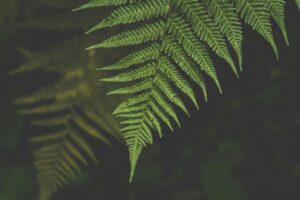
Ferns are plants without flowers. They use spores to reproduce, and unlike mosses, they have stems, leaves, and roots. You can find ferns in lots of places, from deserts to rainforests, and even in your own backyard. Ferns create a good home for small animals like frogs and bugs. Their tough roots also help to keep soil in place when it rains hard.
Non-flowering plants: Gymnosperms
Gymnosperms are seed-producing non-flowering plants. They have naked seeds, which help in the reproduction process, but they do not produce flowers or fruit.
• Conifers
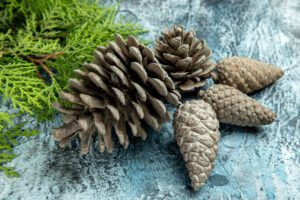
Conifers are non-flowering plants with needle-like leaves that prevent water loss. They bear cones, which are the reproductive structures in conifer plants. These cones are divided into two types: male cones and female cones. Some examples of conifers are pine, thuja, cedars, and fir.
• Cycads
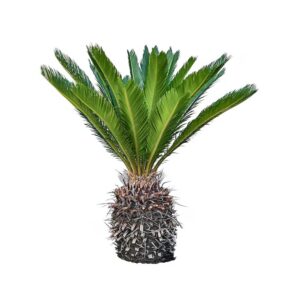
Cycads are a type of plants that belong to the gymnosperm family. They have a strong trunk and big leaves that grow in a spiral pattern. The seeds of cycads are not enclosed within a fruit. Some examples of cycads include sago palms, cardboard palms, Japanese cycads, etc.
Three Popular non-flowering plants
1. Snake Plant
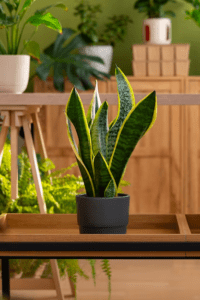
The Snake Plant is a highly low-maintenance plant that requires minimal care. Its long, sword-shaped leaves bring a dramatic aesthetic to any environment. This plant is adaptable to low-light conditions and does not require frequent watering, making it an ideal choice for both novice and seasoned plant enthusiasts. In addition to enhancing the aesthetics of your space, the Snake Plant is renowned for its air-purifying qualities, effectively removing toxins and releasing oxygen, particularly during the night.
2. Philodendrons

Philodendrons are popular non-flowering plants known for their green leaves and easy maintenance. The heartleaf variety, with its glossy leaves and trailing vines, is especially attractive. These plants thrive in low to medium sunlight and are great for homes and offices. They require minimal care, making them a low-maintenance option for plant enthusiasts looking for green companions.
3. Ficus

Ficus plants adapt well to different light conditions, making them suitable for various environments. Placing the plant in a place with ample sunlight can truly transform your home into a plant paradise. The Ficus family includes popular plants like the Fiddle Leaf Fig and Rubber plant, which have a different leaf shape, sizes, and textures. These plants are the favorites of interior designers and plant fans for their versatility.
Interesting Facts about non-flowering plants
• Non-flowering plants like ferns and mosses have existed for hundreds of millions of years.
• Non-flowering plants mainly reproduce using tiny structures called spores. When the conditions are right, these spores can grow into new plants.
• Some plants that do not produce flowers, such as mosses, are great at showing us how the environment is doing. They can notice changes like how wet or hot the air is and show us these changes.
• Mosses, a type of bryophyte, can thrive in harsh environments. They are essential for stabilizing soil.
• Gymnosperms were among the first plants to develop seeds, but they did not have the protection of fruits.
• Algae, a diverse group of non-flowering plants, support marine and freshwater ecosystems.
Non-Flowering Plants Caring Tips
| Symptom | Possible Causes | Solutions |
|---|---|---|
| Stunted growth, pale leaves | Nitrogen deficiency, pests | Fertilize, check for pests and remove if necessary. |
| Very small leaves | Nutrient or light deficiency | Fertilize, move to a brighter location.. |
| Brown or dry leaf tips | Dry air, heat, or lack of water | Mist plant with water, relocate to a cooler area. |
| Yellow leaves | Iron deficiency, overwatering, underwatering, or lack of light | Repot, use decalcified water, move to a brighter location. |
| Falling leaves | Drafts or waterlogging | Relocate, reduce watering. |
| Fast-growing, tall shoots | Lack of light | Move to a brighter location. |
| Limp leaves, rotting roots | Root rot (disease) or waterlogging | Remove rotten roots, repot, reduce watering. |
| Sticky film on the leaves | Pests | Inspect for pests and remove if necessary. |
Conclusion
Non-flowering plants are an important part of Oman’s diverse plant life. They have adapted to Oman’s tough environment and are important for the environment. It’s important to appreciate these amazing plants and protect Oman’s natural heritage.
Non-Flowering Plants FAQs
What is the other name for nonflowering plants?
Plants that do not produce flowers and reproduce through spores are known as non-flowering plants or cryptogams. The term “cryptogams” comes from the Greek words “kryptos” (hidden) and “gamos” (marriage), referring to their hidden reproductive structures.
What are some Non-Flowering Shrubs in Oman?
Hardy non-flowering shrubs have adapted well to these tough conditions and the dry climate in Oman. These resilient plants often have features like fleshy leaves, deep roots, and waxy coverings to save water. Examples of these shrubs include the desert date (Elaeagnus angustifolia) and the tamarisk (Tamarix spp.).10 Examples of Non-Flowering Plants in Oman
Give me ten examples of nonflowering plants in Oman?
Non-flowering plants are essential in Omani culture and economy. For instance, the Date Palm (Phoenix dactylifera) is widely recognized for its delicious fruits.
• Cycas revoluta: Palm-like, thrives in coastal regions.
• Maidenhair Fern: Delicate, found in oases.
• Resurrection Plant: Survives extreme drought.
• Silver Moss: Forms patches on rocks and soil.
• Chlamydomonas reinhardtii: Single-celled green alga, primary producer.
• Button Mushroom: Edible fungus, cultivated in Oman.
• Clubmoss: Fern-like, found in moist areas.
• Field Horsetail: Ancient plant, common in wetlands.
• Mangrove: Coastal tree, adapted to saline environments.
How do non-flowering plants benefit Oman's biodiversity and local livelihoods?
Non-flowering plants are crucial for Oman’s biodiversity and local livelihoods. They provide habitats, aid in nutrient cycling, prevent soil erosion, and sequester carbon. These plants also offer food, medicine, economic opportunities, and support tourism.
What are Aquatic Non-Flowering Plants?
Aquatic plants that don’t produce flowers live in water and are known as cryptogams. They are important in water environments because they provide food and oxygen for aquatic animals. In Oman, common non-flowering water plants include algae, water lilies, and certain mosses. You can find these plants in coastal areas and inland waterways in the country.
